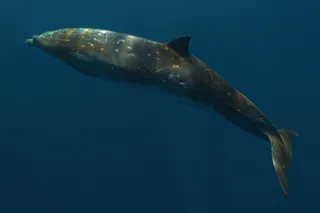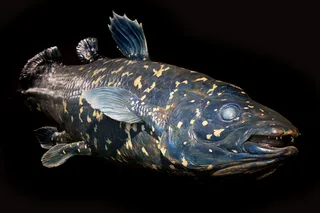Brian Switek, The extended twilight of the mammoths:
So, if the team's analysis is correct, both mammoths and horses lived in the interior of Alaska between about 11,000 and 7,000 years ago. This is significantly more recent than the youngest fossil remains of horses and mammoths, dated between 15,000 and 13,000 years ago. There are at least two factors that might contribute to this disparity. The first is that fossils from this more recent time were preserved but have not yet been found. More likely, though, is that the populations of both mammoths and horses had dwindled to the point where fossil preservation was becoming increasingly unlikely. There were so few of them that the death of an individual in circumstances amenable to preservation was becoming rarer and rarer. Either way, this discovery has important implications for the extinction of horses and mammoths in North America. Based upon the fossil data alone it had been hypothesized that both disappeared around the time that humans became established in North America.* Some have taken this association to suggest that humans engaged in a blitzkrieg in which naive New World megamammals were quickly dispatched by the human hunters. If the new evidence is correct, though, humans did not wipe out horses and mammoths overnight. Instead humans lived alongside dwindling populations in Alaska for thousands of years. Likewise, these new findings also contradict the favored hypothesis of one of the study's authors, Ross MacPhee, who previously proposed that some kind of "hyperdisease" carried by humans (or animals that traveled with humans) quickly wiped out these animals. The pattern of extinction was obviously more protracted.
This seems about right. Excuse the analogy, but it sometimes seems that models of human-caused extinction of mega-fauna portray ancient hunter-gatherers as Einsatzgruppen, and the mega-fauna as Jews and Communists. Though genocides of human populations in the concerted manner of the Germans against the Jews, Gypsies and other groups during World War II have occurred periodically, more often what we see is a slow wearing down and attrition of marginal groups at the expense of dominant ones. It seems a plausible model that when mega-fauna were plentiful hunters would focus on them, but once the mega-fauna became rare naturally the return on investment would decrease and it would become rational to shift to other prey organisms. This implies that many mega-fauna likely persisted in isolated pockets as relict populations, and may have been killed off only far later, or perhaps even succumbed to a natural environmental calamity. In another era the last herds of wild horses would probably have gone extinct due to drought, or perhaps been hunted down by a random group of humans who had no idea that they were decreasing the biological diversity of the planet.













